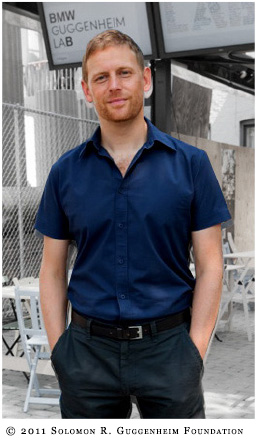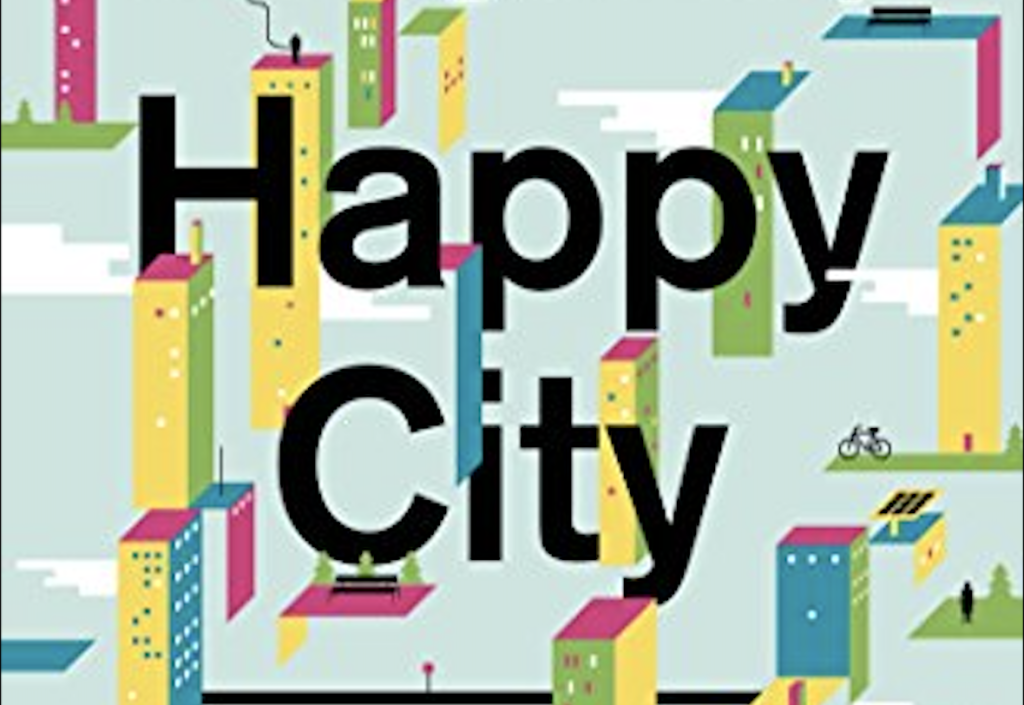Charles Montgomery will be the first to admit to you that he did not start off as an urban planner or a neuroscientist. He started his journey that led to his most recent book, Happy City, as a curious journalist wanting to learn more about what it means to be happy and how our environment, social and physical, plays a role in happiness.

His curiosity led him down a path where he learned more about urban design, the emerging science of happiness and how the two overlap. He has used the insights gained from his research to drive experiments such as those mentioned below with the BMW Guggenheim Lab, as well as in advising urban planners, students and policy-makers around the world including the Canada, England and the U.S.
Open Voices had the opportunity to talk with Montgomery about his work and how he sees the connections between environment and happiness being applied to green spaces in urban communities.
Open Voices: To start off, how have you developed such an interesting intersection of interests with urban planning and researching happiness?
Charles Montgomery: I think my journey is unique because I didn’t start as a planner or an urbanist. I started as a curious person, a journalist. In 2007 I took a ride through Bogota, Colombia with the ex-mayor of that city, Enrique Penalosa, who insisted he had used a radical transformation in urban design in order to make his citizens happier over the three years of his term and it was a thrilling experience…I left wondering what does he mean by happiness and how do you measure it and where’s the evidence? Can a city be a machine for happiness, and if so, what’s the link between design and human well-being. I spent the next five years looking for evidence in neuroscience, psychology, and behavioral economics and in stories of design activism around the world.
Open Voices: Why do you think there’s such a strong connection between where you’re living and your happiness? Why the environmental aspect of it?
Montgomery: What I’ve found in my travels and in empirical research is that our cities influence how we move, they also influence how we feel, and how we regard other people. They influence the most powerful ingredient of human happiness, which is social relationships. So ultimately every city is a social machine and it can build or corrode happiness in a way that it either enables us to have more time with family and friends and more positive interactions with strangers or less. The most powerful example is that people who live in car dependent neighborhoods on the very edge of urban sprawl report that they have less interaction with the neighbors, less trust with their neighbors, they volunteer less, they have dinner with their families less.
Open Voices: During your research have you noticed any correlation between the amount of green public spaces in a community and the perceived happiness of those people living there?
Montgomery: Halfway through writing this book I took a detour and got involved in something called the BMW Guggenheim Lab. I was invited to join a team creating this pop-up urban laboratory in New York and they gave us the resources to treat the city as a laboratory essentially. And so I took the name of the lab literally and I invited a neuroscientist in named Colin Ellard to help create a participatory experiment in which we would take people on tours of the Lower East Side in Manhattan and record how the urban environment affected their bodies and minds. We put skin conductance cuffs on people to measure their levels of arousal, and Colin used some Blackberries to take subjective data on how happy people were in the moment. What we found was that even small doses of nature in the neighborhood made our tour participants much happier.
In another lab experiment, at a party or an experimental party I set up in New York at my book launch at the Guggenheim we played a little game. We invited people, in fact, we paid people to be exposed to one of two different environments for eight minutes. One was a beautiful natural environment, you’d sit in the booth and gaze at this natural environment and listen to nature sounds and while another volunteer sat and gazed at a brutal, concrete, urban environment and listened to sounds of traffic.
Now, it shouldn’t surprise us that the person who gazed at nature felt better at the end; what was remarkable was that at the end of this experiment we paid people $10 for participating for their time but then we asked if they would like to donate to a good cause, and what we found is that the people who were exposed to nature were significantly more likely to donate their money to a good cause. This is backed up by other peer-reviewed research…the peer review says a couple of things, and that is exposure to nature in a lab setting causes people to both be more generous at the end of the exposure and to express more altruistic life goals.
Open Voices: Planners have to deal with a balance between the natural and the built environment in a city. With all this research about the positive effects of nature constantly being proven over and over again in peer reviewed studies and your social experiments, how do you see cities handling this balance in the future?
Montgomery: First of all, access to nature is a matter of public health and I would add that it’s a matter of community and social resilience. We need to make that argument and public health authorities need to be making this case for more nature in cities. I’ve found I enjoy the urban participatory experiments because it gives regular people a visceral understanding of these effects, and I’ve enjoyed getting members of the public to feel these things, not just to know them but to feel them. Perhaps if we can convince policy makers to share these experiences as well we might find greener cities.
I also want to make the point that city making is about choice. It’s about trade-off and I see cities making a big deal about their investments in huge parks, and this is a good thing, but when I’ve surveyed New Yorkers about Central Park, which they love, most of them told me they hadn’t even been to Central Park in the last week. My point is that we need to provide nature in cities in all sizes. The window basket and the pocket park and the small plaza or community garden are just as important as the vast Central Park.
>> Learn more about Charles Montgomery’s research here.

